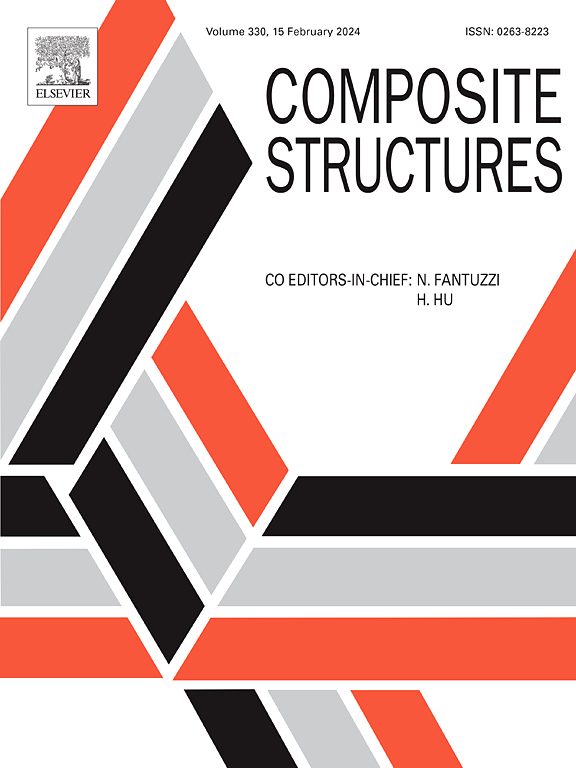Effect of lightning arc on damage characteristics of carbon fiber-reinforced polymer composites with a fastener by an improved calculation method
IF 6.3
2区 材料科学
Q1 MATERIALS SCIENCE, COMPOSITES
引用次数: 0
Abstract
This study investigates the lightning damage characteristics to carbon fiber-reinforced polymer (CFRP) composites with a fastener under the long-term lightning components B + C, focusing on the damage mechanisms influenced by the lightning arc channel. The lightning arc simulation model of specimen is constructed, the current density and heat flux distributions of the specimen are obtained.Using the arc model,a thermal-electrical-structural coupling model is proposed, enabling an analysis of the interaction between the specimen and lightning channel. Results indicate that arc heat in the lightning channel is the primary cause of specimen damage. The damage decreases in the thickness direction, forming a ‘funnel-shaped’ damage pattern with a wide upper part and a narrow lower part. The simulation indicates that damage area under the arc heat effect is 24 % smaller than the experimentally observed damage area, while damage under Joule heat is 97 % smaller. Compared with the unprotected specimen, the damage area of the copper mesh-protected specimen is 54 % smaller; however, the damage area is more concentrated and intense. Therefore, relying on a single component current waveform to assess protective effectiveness is insufficient. This study provides a reliable basis for analysing the lightning protection designs for CFRP composites in lightning environment.
求助全文
约1分钟内获得全文
求助全文
来源期刊

Composite Structures
工程技术-材料科学:复合
CiteScore
12.00
自引率
12.70%
发文量
1246
审稿时长
78 days
期刊介绍:
The past few decades have seen outstanding advances in the use of composite materials in structural applications. There can be little doubt that, within engineering circles, composites have revolutionised traditional design concepts and made possible an unparalleled range of new and exciting possibilities as viable materials for construction. Composite Structures, an International Journal, disseminates knowledge between users, manufacturers, designers and researchers involved in structures or structural components manufactured using composite materials.
The journal publishes papers which contribute to knowledge in the use of composite materials in engineering structures. Papers deal with design, research and development studies, experimental investigations, theoretical analysis and fabrication techniques relevant to the application of composites in load-bearing components for assemblies, ranging from individual components such as plates and shells to complete composite structures.
 求助内容:
求助内容: 应助结果提醒方式:
应助结果提醒方式:


